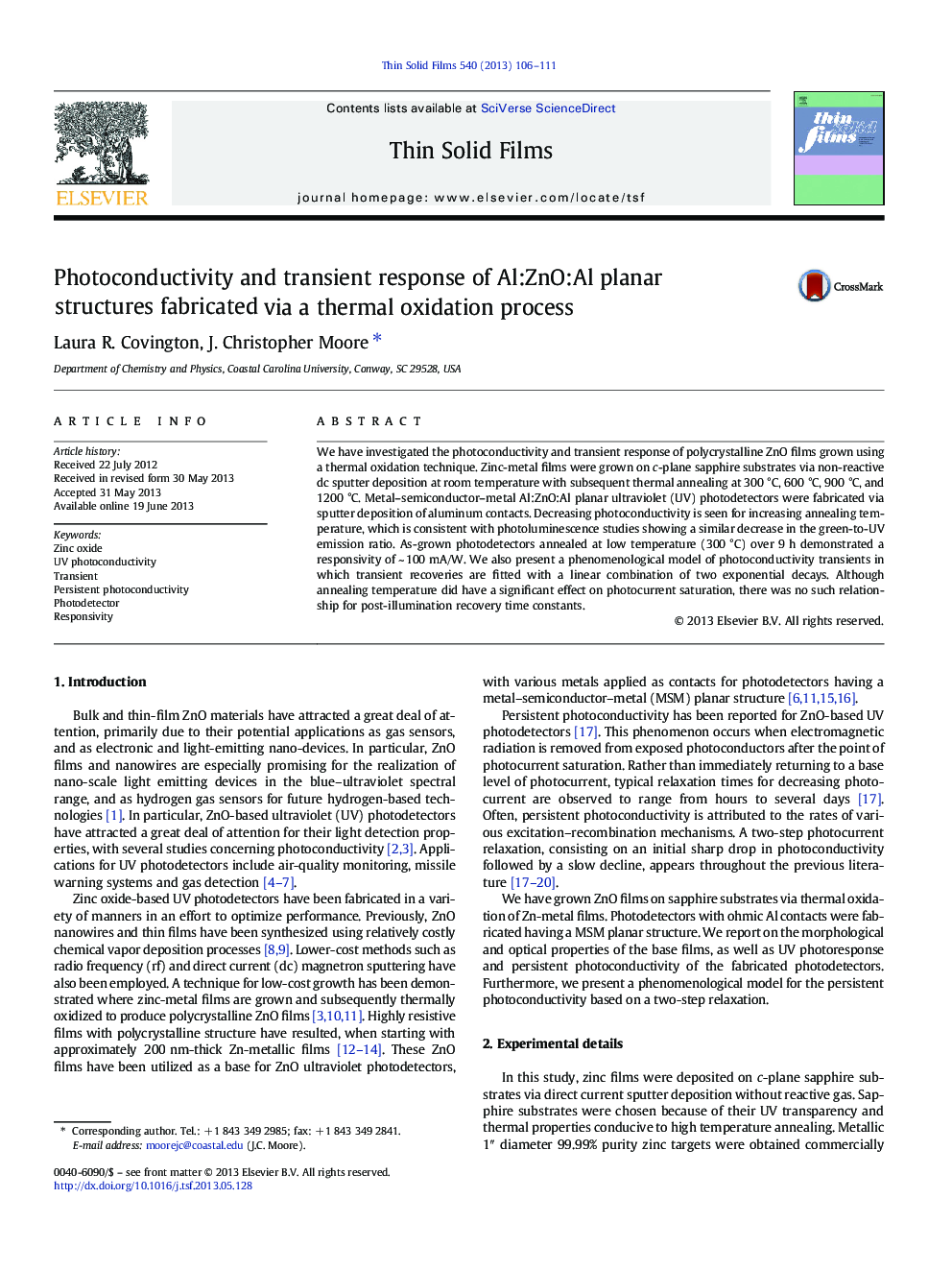| Article ID | Journal | Published Year | Pages | File Type |
|---|---|---|---|---|
| 1666060 | Thin Solid Films | 2013 | 6 Pages |
Abstract
We have investigated the photoconductivity and transient response of polycrystalline ZnO films grown using a thermal oxidation technique. Zinc-metal films were grown on c-plane sapphire substrates via non-reactive dc sputter deposition at room temperature with subsequent thermal annealing at 300 °C, 600 °C, 900 °C, and 1200 °C. Metal-semiconductor-metal Al:ZnO:Al planar ultraviolet (UV) photodetectors were fabricated via sputter deposition of aluminum contacts. Decreasing photoconductivity is seen for increasing annealing temperature, which is consistent with photoluminescence studies showing a similar decrease in the green-to-UV emission ratio. As-grown photodetectors annealed at low temperature (300 °C) over 9 h demonstrated a responsivity of ~ 100 mA/W. We also present a phenomenological model of photoconductivity transients in which transient recoveries are fitted with a linear combination of two exponential decays. Although annealing temperature did have a significant effect on photocurrent saturation, there was no such relationship for post-illumination recovery time constants.
Related Topics
Physical Sciences and Engineering
Materials Science
Nanotechnology
Authors
Laura R. Covington, J. Christopher Moore,
